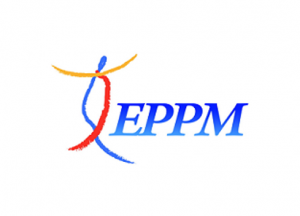LHW has participated in EPPM2022 Conference with two papers:
Remote Sensing Synergies for Port Infrastructure Monitoring and Condition Assessment
Christina N. Tsaimou, Dimitrios Georgios N. Kagkelis, Konstantinos Karantzalos and Vasiliki Tsoukala
Unmanned Aerial Vehicles: A Survey on Monitoring Advancements for Port Infrastructure Applications
Konstantina Th. Chelioti, Christina N. Tsaimou and Vasiliki K. Tsoukala
Abstract: Currently, there is an urgent need for developing cutting-edge port infrastructure monitoring solutions which exploit different multi-modal data towards timely optimal port management strategies and decision making. In fact, advanced monitoring applications allow for optimizing maintenance, rehabilitation and upgrade actions by assessing structural integrity of port structures which is affected by a vast variety of stressors such as aging, imposed loads, inadequate maintenance treatments, human-induced factors, natural hazards and the ever-changing climate. To this end, the purpose of this research is to enhance Remote Sensing (RS) port monitoring practices by investigating the potential of combining different types of RS methods to record and assess infrastructure condition. Therefore, two RS type of data: a) satellite imagery and b) aerial imagery from Unmanned Aerial Vehicle (UAV), were considered for structural monitoring at a Greek port, namely Lavrio port, located at northeastern Attica, Greece. In particular, the applied monitoring program was focused on its windward rubble mound structure where temporal changes in the armour layer were detected. Significant parameters regarding spatial resolution and UAV flight characteristics were further investigated aiming at ensuring high quality data. The overall research indicated that RS synergies were proved to be a promising practice for acquiring advanced spatial and temporal information of port infrastructure condition.
Abstract: Ports play a significant role in the economic and social activities of the areas they serve. However, the adverse effects of the harsh and highly corrosive environments that ports operate in, along with phenomena related to the climate crisis and insufficient maintenance practices, increase port infrastructure’s susceptibility to rapid degradation. This degradation can be aesthetic, functional, or structural and often leads to loss of serviceability at either a component (local and national) level or a global level. Moreover, many port structures have reached the limit of their lifetime, thus introducing the concept of extending their lifespan as a financially attractive alternative to constructing new facilities. Therefore, port operators pursue monitoring the structural integrity of the structures through an inspection plan aiming to reduce their maintenance and rehabilitation costs and ensure the safety of both the port infrastructure itself and the human lives. Optimising monitoring approaches to enable damage detection and condition assessment can be achieved through the employment of Non-Destructive Testing (NDT) and Remote Sensing (RS) techniques. The current surge of using Unmanned Aerial Vehicles (UAVs) for both RS and NDT monitoring practices has proved promising since UAVs provide improved accessibility, increased inspection speed, and reduced safety hazards. The present paper is focused on investigating and evaluating the recent advances in UAV-driven port infrastructure monitoring. For this purpose, a comprehensive review of UAVs applications combined with NDT Infrared Thermography (IRT) and Ground Penetrating Radar (GPR) or RS Close Range Photogrammetry (CRP) and Light Detection and Ranging (LiDAR) is carried out to assess the potential and the limitations of the UAV-based monitoring approaches. This research provides valuable information on enhancing management strategies by upgrading port monitoring practices.

